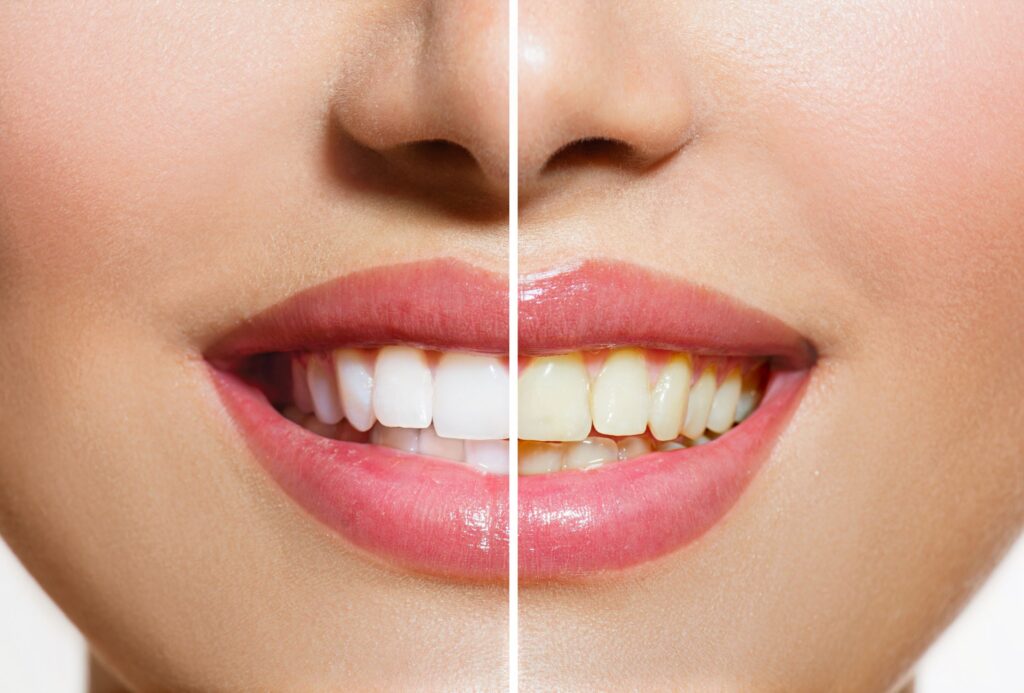
People often form a first impression of you based on an initial meeting or an online profile photo, and if your teeth look more yellow than white, you’re less likely to make a positive impact. Although plenty of commercially available products claim to be able to lighten them, there’s no guarantee that you’ll achieve the desired results. To make matters worse, some patients also develop sensitivity from inaccurate applications or overexposure to bleaching agents.
Fortunately, your dentist can provide professional whitening services that can help! However, there are different types of dental discoloration, and not all of them can be treated topically. Read on to learn more about the types of stains and how they’re usually handled!
What Are the Types of Dental Stains?
It’s easy to assume that applying a strong enough whitener to your teeth will surely reduce the stubborn stains that you can’t seem to brush away. Unfortunately, that’s not always the case. The best treatment for you depends on your unique situation and the type of discoloration that you’re dealing with.
The various kinds are outlined in more detail below:
Extrinsic
This is probably what you think of when you try to imagine tooth stains in your mind. These blemishes exist in the outermost layer of your teeth, the enamel. It occurs when darkly pigmented ingredients from the foods and drinks you consume cling to the surface and leave their mark. Common culprits include dark berries, coffee, tea, wine, and brown sodas.
These imperfections are usually relatively easy to address with topical treatments, like an in-office professional whitening procedure or take-home kit provided by your dentist. They have access to powerful gels that are created to achieve optimal results while minimizing potential discomfort. Plus, they use custom-fitted trays to avoid irritating your gum tissues.
Intrinsic
Not all discoloration is so easily remedied. Some stubborn stains might seep into the lower layer of dentin, while some blemishes even originate there. For example, excessive use of fluoride in your childhood can leave spots in your enamel. Other issues stem from genetics, prescription medications, or other an injury.
Typically, whitening doesn’t affect these problems because they exist below the surface. Instead, your dentist can provide custom-fitted veneers that are bonded to the front surface of your teeth to mask imperfections. These are tailored to be just the right size, shape, and hue for a seamless smile with no one the wiser.
Age-Related
Did you know that teeth are not naturally bright white? The enamel has a translucent pearly shade, but the dentin underneath is more yellow. As you age, the protective outer layer thins due to years of daily wear and tear. This allows more of the deeper tone to shine through, making your grin look darker than it used to. Your dentist can work with you to determine an appropriate method to give you back a much more youthful visage.
If you’re unsure of the cause of your dental discoloration but are longing for a sparkling, clear smile, the best next step is to schedule a cosmetic consultation!
About the Practice
At Rauchberg Dental Group, people of all ages benefit from a team of experts with 30+ years of combined experience. With general dentists and specialists on staff, you and your entire family receive the same top-quality care conveniently under one roof. They offer a comprehensive array of services to enhance your oral health and appearance regardless of its current condition. Whether you need teeth whitening or veneers, they can brighten your grin by several shades. You can request an appointment on the website or call (973) 718-9887.
